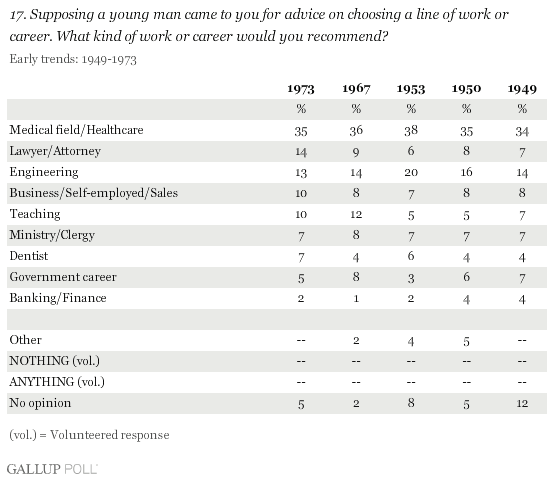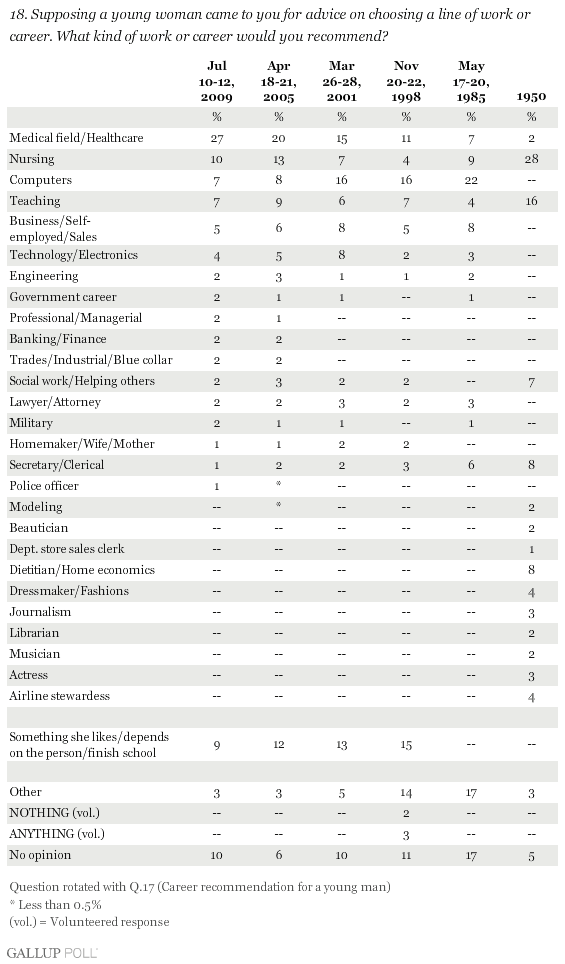PRINCETON, NJ -- In today's highly challenging job market, Americans cite the medical field, more than any other profession, as the line of work they would recommend to both young men and young women looking for career advice. Thirty-seven percent would recommend medicine to young women, including 10% citing nursing specifically. Twenty-two percent would recommend medicine for young men, with less than one-half of one percent naming nursing.
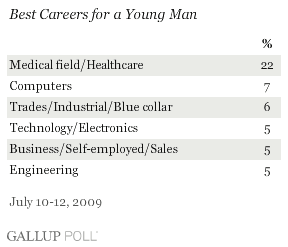
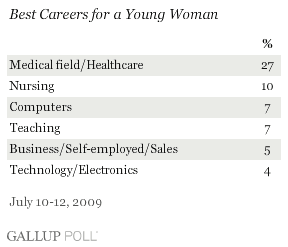
The majority of Americans who advocate the medical field as a career path for either gender mention medicine or healthcare generally; however -- in addition to nursing -- some specifically advise young people to become doctors, pharmacists, or veterinarians. Medicine is the only career to have increased on these measures since Gallup last updated them in 2005, and is now the overwhelming response on both questions.
Computers and business/sales are among the top professions named for both genders. Teaching appears in the top five only for young women, mentioned by 7% of Americans, but a not-insignificant 4% recommend it for young men.
Technology/electronics emerges in the top five recommended careers for young men, named by 5%; and, at 4%, it comes close among women. The trades and engineering both rank high for young men, mentioned by 6% and 5%, respectively, but fall low on the list for women.
Although the recent federal stimulus plans have helped make government a growth industry at a time when unemployment is hovering between 9% and 10%, only 3% of Americans mention government as a career for young men and only 2% for young women. Additionally, the military is recommended by 4% for men and by 2% for women.
No other career is mentioned by more than 2% of Americans (see the full list at the end of this report.)
Career Fads Come and Go
These findings are from a July 10-12 Gallup Poll, based on a question Gallup instituted in 1949. At that time, only career advice for young men was measured, but in 1950, the question about young women was added.
The data document several societal shifts over the past six decades. The trend for young men shows a surge in interest in engineering during the 1950s, a spike in teaching during the Vietnam War era (when students studying to become teachers could earn draft deferments), the emergence of computers and electronics technology in the 1980s, and the displacement of medicine as the top-rated field by computers in 1985, followed by a partial resurgence of medicine this decade.
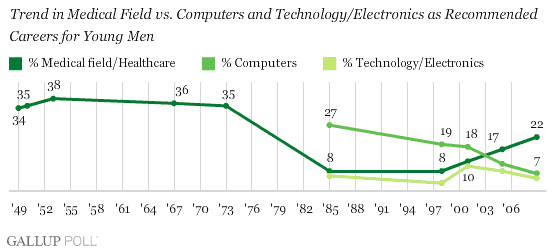
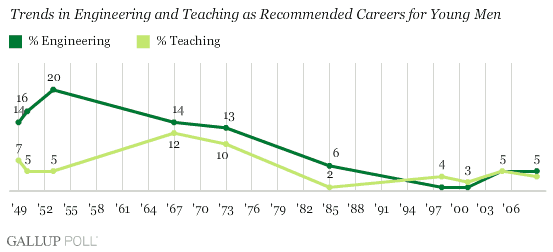
The recommendations for women highlight the impact of the women's rights movement over the past half century, with career choices becoming less gender specific. In 1950, nursing was by far the lead recommendation for women, followed by teaching and then, to a lesser extent, secretarial work, home economics, and social work -- all fields (with the exception of teaching) hardly mentioned at the time for men. By 1985, mentions of nursing and teaching had dropped considerably for women and the field of computers ranked No. 1 (as it did for men). Over the last two decades, more and more Americans have named medicine and healthcare for women, with nursing maintaining a relatively high degree of support.
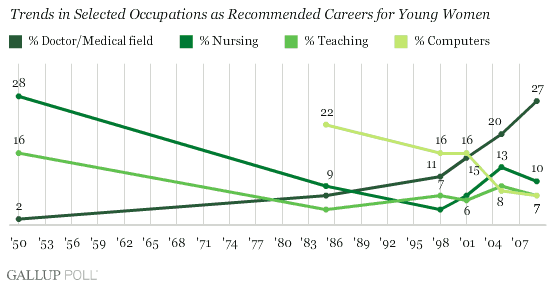
Bottom Line
At a time when Americans widely recognize that a quality job is hard to come by, the healthcare industry -- including medicine -- is most widely considered the best career choice for young people. That may, in part, reflect assumptions about the social status of a medical career. However, the increase in the percentages recommending medicine, nearly doubling for both men and women since 2001, no doubt reflects a growing perception that it's also a practical choice.
Survey Methods
Results are based on telephone interviews with 1,018 national adults, aged 18 and older, conducted July 10-12, 2009. For results based on the total sample of national adults, one can say with 95% confidence that the maximum margin of sampling error is ±4 percentage points.
Interviews are conducted with respondents on land-line telephones (for respondents with a land-line telephone) and cellular phones (for respondents who are cell-phone only).
In addition to sampling error, question wording and practical difficulties in conducting surveys can introduce error or bias into the findings of public opinion polls.

